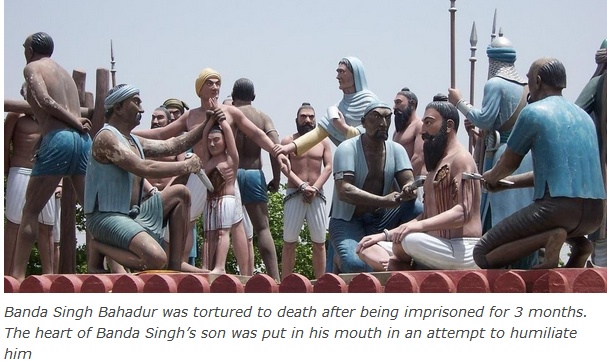How Delhi’s Police Turned Against Muslims
More evidence has emerged that the Indian police took part in violence against Muslims or stood aside during fighting in the capital last month.


By Jeffrey Gettleman, Sameer Yasir, Suhasini Raj and
NEW DELHI — Kaushar Ali, a house painter, was trying to get home when he ran into a battle.
Hindu and Muslim mobs were hurling rocks at each other, blocking a street he needed to cross to get to his children. Mr. Ali, who is Muslim, said that he turned to some police officers for help. That was his mistake.
The officers threw him onto the ground, he said, and cracked him on the head. They started beating him and several other Muslims. As the men lay bleeding, begging for mercy — one of them died two days later from internal injuries — the officers laughed, jabbed them with their sticks and made them sing the national anthem. That abuse, on Feb. 24, was captured on video.
“The police were toying with us,” Mr. Ali said. He recalled them saying, “Even if we kill you, nothing will happen to us.”
So far, they have been right.
India has suffered its worst sectarian bloodshed in years, in what many here see as the inevitable result of Hindu extremism that has flourished under the government of Prime Minister Narendra Modi. His party has embraced a militant brand of Hindu nationalism and its leaders have openly vilified Indian Muslims. In recent months Mr. Modi has presided over a raft of policies widely seen as anti-Muslim, such as erasing the statehood of what had been India’s only Muslim-majority state, Jammu and Kashmir.
Now, more evidence is emerging that the Delhi police, who are under the direct command of Mr. Modi’s government and have very few Muslim officers, concertedly moved against Muslims and at times actively helped the Hindu mobs that rampaged in New Delhi in late February, burning down Muslim homes and targeting Muslim families.
Several videos showed police officers beating and throwing rocks at Muslim protesters and waving on Hindu mobs to join them.
A police commander said that as the violence erupted — at that point mostly by Hindu mobs — officers in the affected areas were ordered to deposit their guns at the station houses. Several officers during the violence were later overheard by New York Times journalists yelling to one another that they had only sticks and that they needed guns to confront the growing mobs. Some researchers accuse the police force of deliberately putting too few officers on the streets, with inadequate firepower, as the violence morphed from clashes between rival protesters into targeted killings of Muslims.
Two thirds of the more than 50 people who were killed and have been identified were Muslim. Human rights activists are calling it an organized massacre.
Though India’s population is 14 percent Muslim and New Delhi’s is 13 percent, the total Muslim representation on the Delhi police force is less than 2 percent.


India’s policing culture has long been brutal, biased, anti-minority and almost colonial in character, a holdover from the days of British rule when the police had no illusions of serving the public but were used to suppress a restive population.
But what seems to be different now, observers contend, is how profoundly India’s law enforcement machinery has been politicized by the Bharatiya Janata Party, Prime Minister Narendra Modi’s Hindu-nationalist governing bloc.
Police officials, especially in states controlled by Mr. Modi’s party, have been highly selective in their targets, like a Muslim school principal in Karnataka who was jailed for more than two weeks on sedition charges after her students performed a play about a new immigration law that police officials said was critical of Mr. Modi.
Some judges have also seemed to be caught up — or pushed out — by a Hindu-nationalist wave.
A Delhi judge who expressed disbelief that the police had yet to investigate members of Mr. Modi’s party who have been widely accused of instigating the recent violence in Delhi was taken off the case and transferred to another state. And at the same time that the Supreme Court has made a string of rulings in the government’s favor, one of the judges, Arun Mishra, publicly praised Mr. Modi as a “visionary genius.”
All of this is emboldening Hindu extremists on the street.
The religiously mixed and extremely crowded neighborhoods in northeastern Delhi that were on fire in late February have cooled. But some Hindu politicians continue to lead so-called peace marches, trotting out casualties of the violence with their heads wrapped in white medical tape, trying to upend the narrative and make Hindus seem like the victims, which is stoking more anti-Muslim hatred.
Some Muslims are leaving their neighborhoods, having lost all faith in the police. More than 1,000 have piled into a camp for internally displaced people that is rising on Delhi’s outskirts.


Muslim leaders see the violence as a state-sanctioned campaign to teach them a lesson. After years of staying quiet as Hindu lynch mobs killed Muslims with impunity and Mr. Modi’s government chipped away at their political power, India’s Muslim population awoke in December and poured into the streets, along with many other Indians, to protest the new immigration law, which favors migrants belonging to every major religion in South Asia — except for Muslims.
Mr. Modi’s government, Muslim leaders say, is now trying to drive the whole community back into silence.
“There’s a method to this madness,” said Umar Khalid, a Muslim activist. “The government wants to bring the entire Muslim community to their knees, to beg for their lives and beg for their livelihoods.”
“You can read it in their books," he said, referring to foundational texts by Hindu nationalists. “They believe India’s Muslims should live in perpetual fear.”
Mr. Modi has said little since the bloodshed erupted,


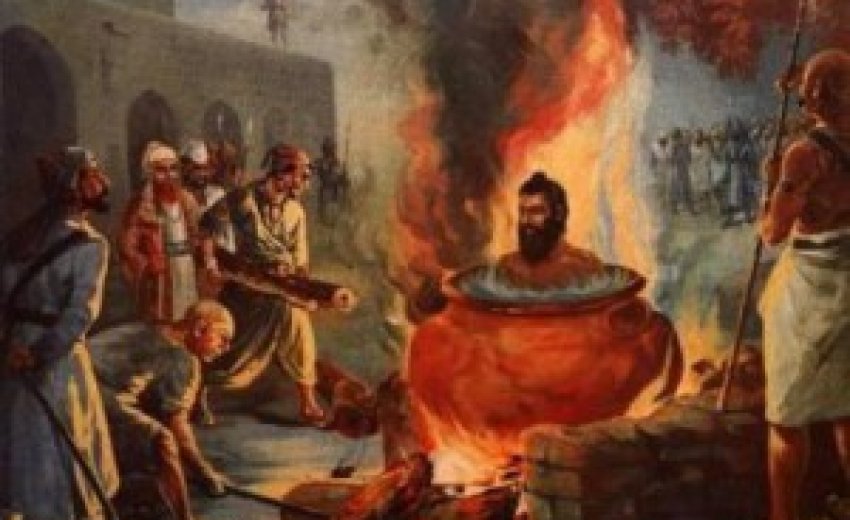

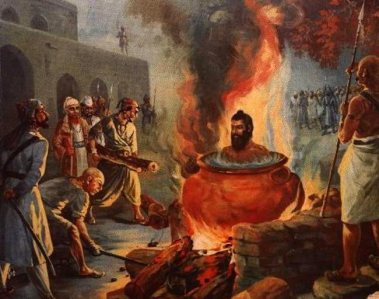 Alain Danielou in his book, Histoire de l’ Inde writes:
Alain Danielou in his book, Histoire de l’ Inde writes: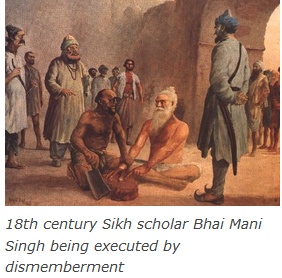 The Persian historian Wassaf writes in his book ‘Tazjiyat-ul-Amsar wa Tajriyat ul Asar’ that when the Alaul-Din Khilji (An Afghan of Turkish origin and second ruler of the Khilji Dynasty in India 1295-1316 AD) captured the city of Kambayat at the head of the gulf of Cambay, he killed the adult male Hindu inhabitants for the glory of Islam, set flowing rivers of blood, sent the women of the country with all their gold, silver, and jewels, to his own home, and made about twentv thousand Hindu maidens his private slaves.
The Persian historian Wassaf writes in his book ‘Tazjiyat-ul-Amsar wa Tajriyat ul Asar’ that when the Alaul-Din Khilji (An Afghan of Turkish origin and second ruler of the Khilji Dynasty in India 1295-1316 AD) captured the city of Kambayat at the head of the gulf of Cambay, he killed the adult male Hindu inhabitants for the glory of Islam, set flowing rivers of blood, sent the women of the country with all their gold, silver, and jewels, to his own home, and made about twentv thousand Hindu maidens his private slaves.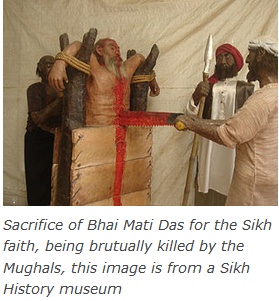 Timur was a Turkic conqueror and founder of the Timurid Dynasty. Timur’s Indian campaign (1398 – 1399 AD) was recorded in his memoirs, collectively known as ‘Tuzk-i-Timuri.’ In them, he vividly described probably the greatest gruesome act in the entire history of the world – where 100,000 Hindu prisoners of war in his camp were executed in a very short space of time. Timur after taking advice from his entourage says in his memoirs :
Timur was a Turkic conqueror and founder of the Timurid Dynasty. Timur’s Indian campaign (1398 – 1399 AD) was recorded in his memoirs, collectively known as ‘Tuzk-i-Timuri.’ In them, he vividly described probably the greatest gruesome act in the entire history of the world – where 100,000 Hindu prisoners of war in his camp were executed in a very short space of time. Timur after taking advice from his entourage says in his memoirs :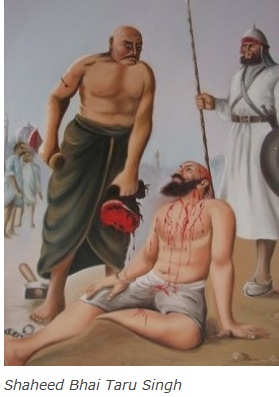 During his campaign in India – Timur describes the scene when his army conquered the Indian city of Delhi :
During his campaign in India – Timur describes the scene when his army conquered the Indian city of Delhi :